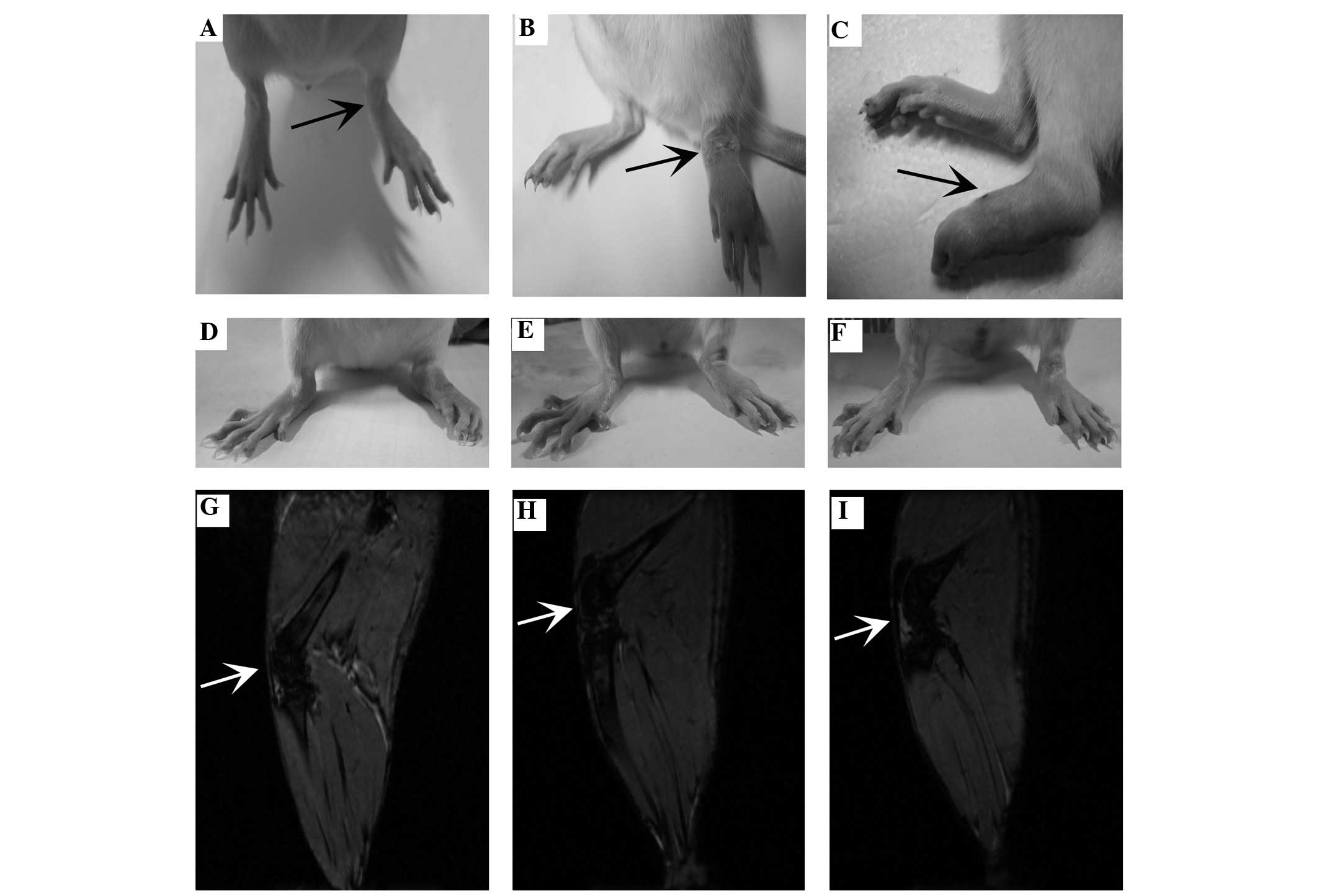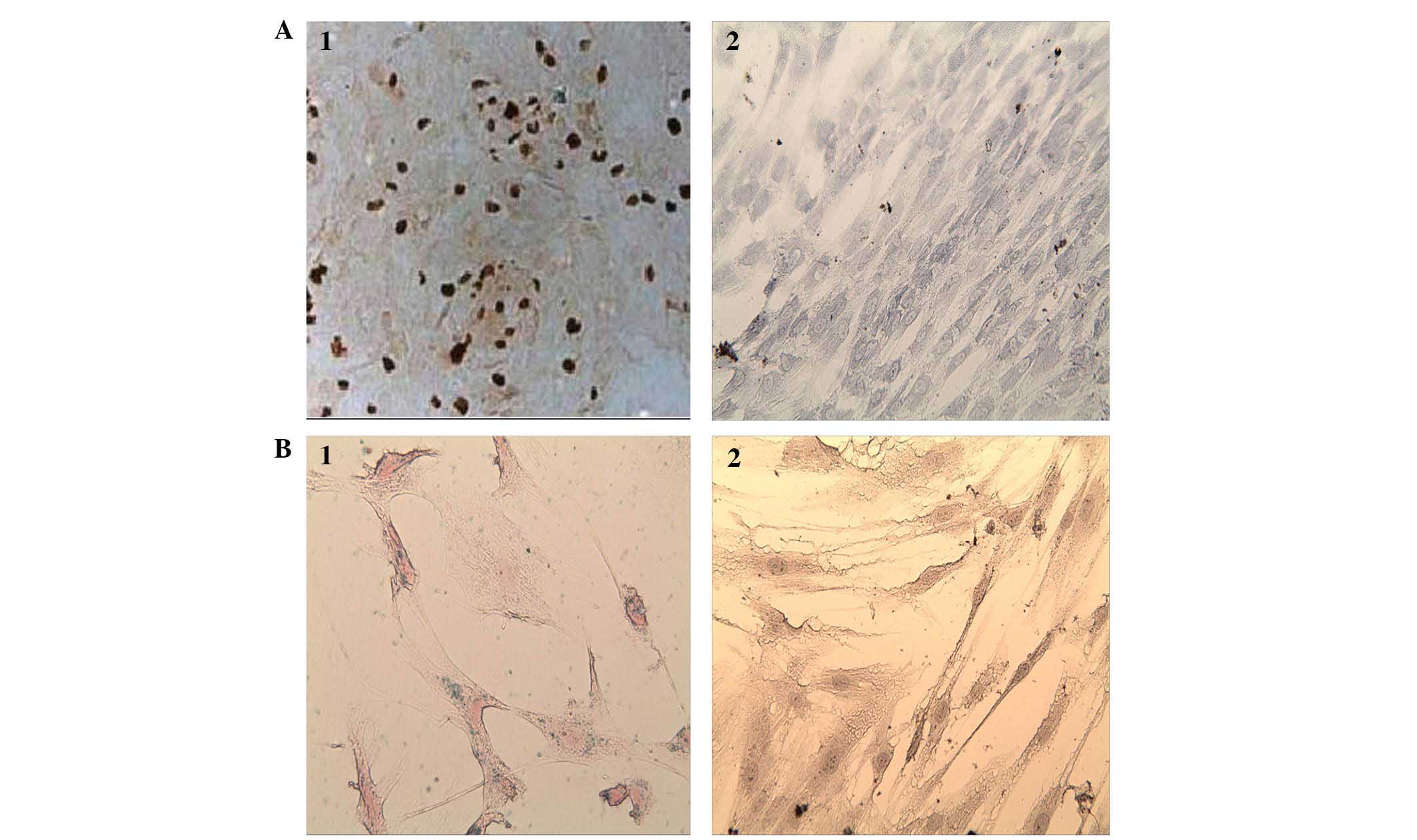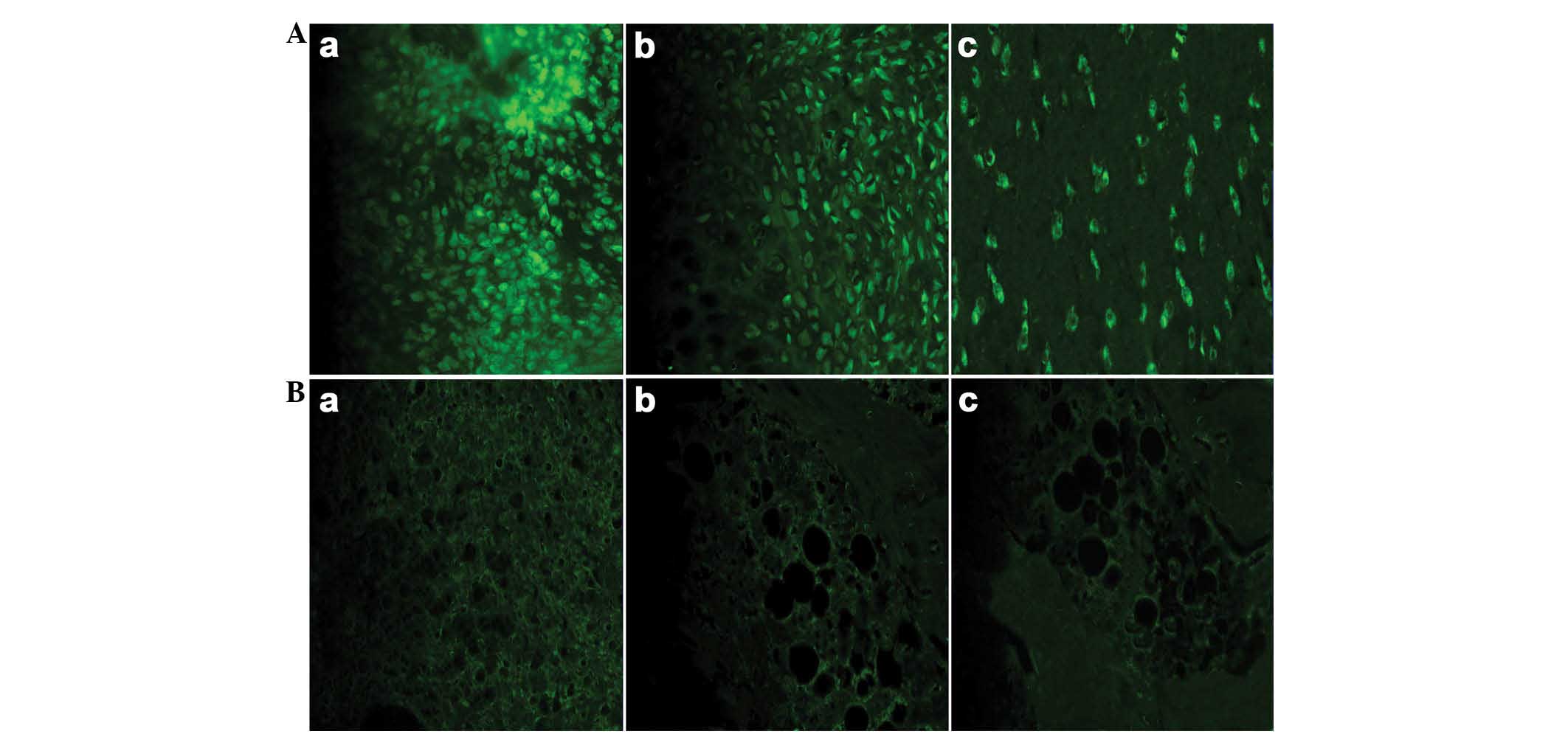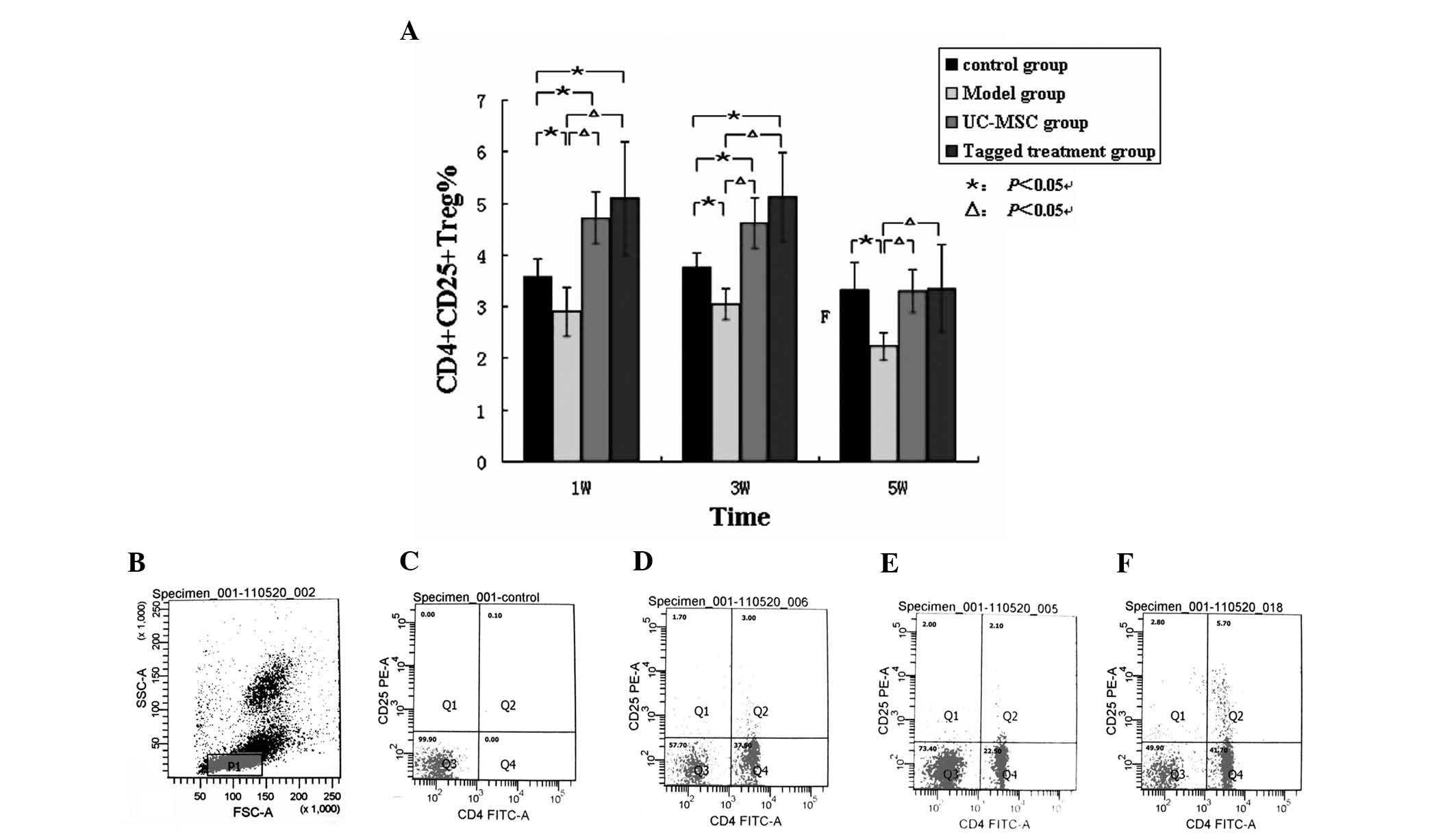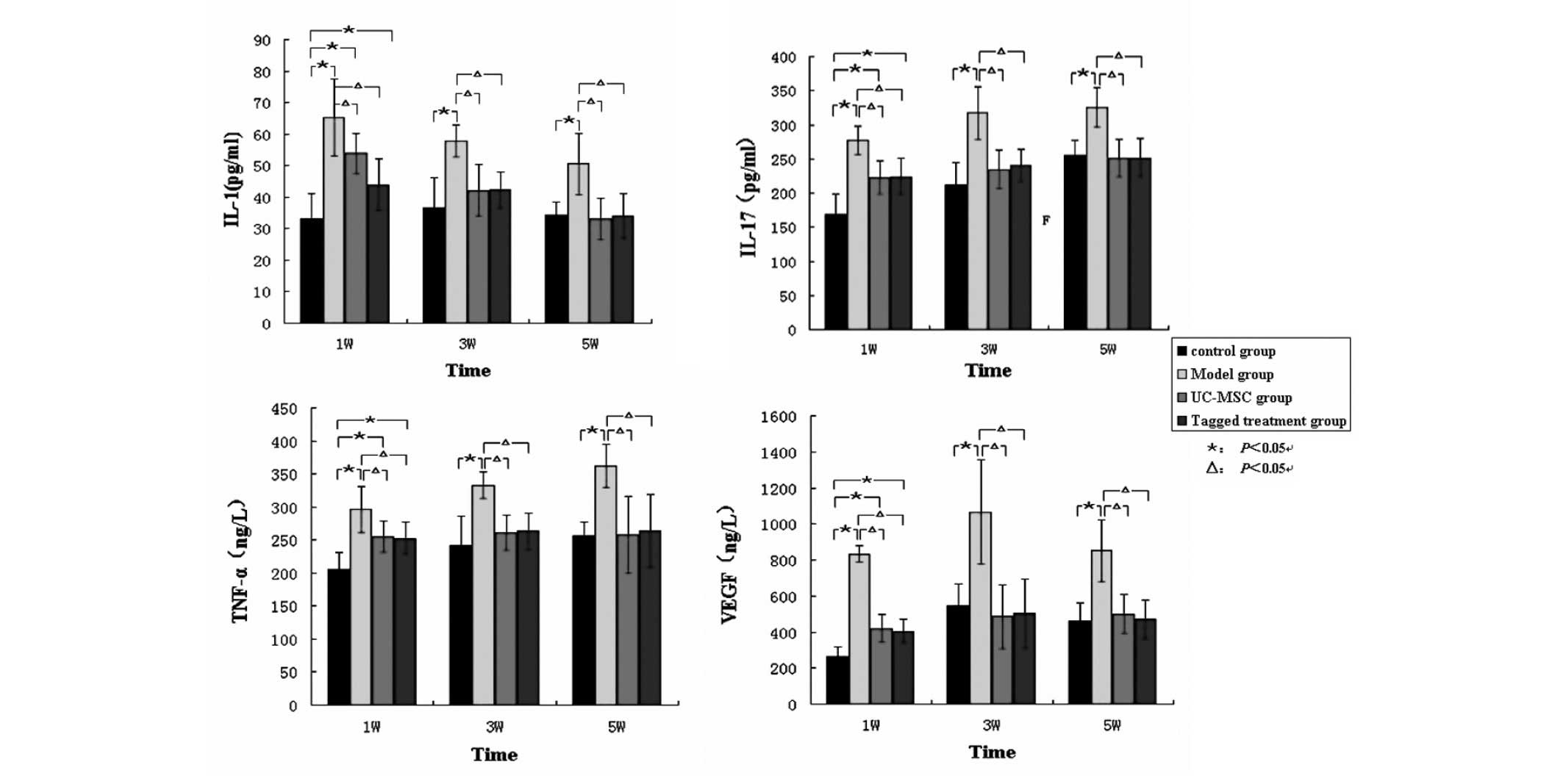|
1
|
Lee DM and Weinblatt ME: Rheumatoid
arthritis. Lancet. 358:903–911. 2001. View Article : Google Scholar : PubMed/NCBI
|
|
2
|
Choy E: Understanding the dynamics:
Pathways involved in the pathogenesis of rheumatoid arthritis.
Rheumatology (Oxford). 51(Suppl 5): v3–v11. 2012. View Article : Google Scholar
|
|
3
|
Rampersad RR, Tarrant TK, Vallanat CT,
Quintero-Matthews T, Weeks MF, Esserman DA, Clark J, Di Padova F,
Patel DD, Fong AM and Liu P: Enhanced Th17-cell responses render
CCR2-deficient mice more susceptible for autoimmune arthritis. PLoS
One. 6:e258332011. View Article : Google Scholar : PubMed/NCBI
|
|
4
|
Aksu K, Donmez A and Keser G:
Inflammation-induced thrombosis: Mechanisms, disease associations
and management. Curr Pharm Des. 18:1478–1493. 2012. View Article : Google Scholar : PubMed/NCBI
|
|
5
|
Boilard E, Nigrovic PA, Larabee K, Watts
GF, Coblyn JS, Weinblatt ME, Massarotti EM, Remold-O'Donnell E,
Farndale RW, Ware J and Lee DM: Platelets amplify inflammation in
arthritis via collagen-dependent microparticle production. Science.
327:580–583. 2010. View Article : Google Scholar : PubMed/NCBI
|
|
6
|
Snowden JA, Saccardi R, Allez M, Ardizzone
S, Arnold R, Cervera R, Denton C, Hawkey C, Labopin M, Mancardi G,
et al: Haematopoietic SCT in severe autoimmune diseases: Updated
guidelines of the European group for blood and marrow
transplantation. Bone Marrow Transplant. 47:770–790. 2012.
View Article : Google Scholar :
|
|
7
|
Liu R, Zhang Z, Lu Z, Borlongan C, Pan J,
Chen J, Qian L, Liu Z, Zhu L, Zhang J and Xu Y: Human umbilical
cord stem cells ameliorate experimental autoimmune
encephalomyelitis by regulating immunoinflammation and
remyelination. Stem Cells Dev. 22:1053–1062. 2013. View Article : Google Scholar
|
|
8
|
Chao KC, Chao KF, Fu YS and Liu SH:
Islet-like clusters derived from mesenchymal stem cells in
Wharton's Jelly of the human umbilical cord for transplantation to
control type 1 diabetes. PLoS One. 3:e14512008. View Article : Google Scholar : PubMed/NCBI
|
|
9
|
Van de Putte LB, Tyndall A, van den Hoogen
FH and Smolen JS: Hematopoietic stem cell transplants for
autoimmune disease: Role of EULAR. European League Against
Rheumatism. J Rheumatol Suppl. 48:98–99. 1997.PubMed/NCBI
|
|
10
|
Xie J, Liu G, Eden HS, Ai H and Chen X:
Surface-engineered magnetic nanoparticle platforms for cancer
imaging and therapy. Acc Chem Res. 44:883–892. 2011. View Article : Google Scholar : PubMed/NCBI
|
|
11
|
Lin CM, Gu J, Zhang Y, Shen LJ, Ma L, Ni
J, Wang ZQ and Wu W: Effect of UC-MSCs on inflammation and
thrombosis of the rats with collagen type II induced arthritis.
Zhonghua Xue Ye Xue Za Zhi. 33:215–219. 2012.In Chinese. PubMed/NCBI
|
|
12
|
Lange F, Bajtner E, Rintisch C, Nandakumar
KS, Sack U and Holmdahl R: Methotrexate ameliorates T cell
dependent autoimmune arthritis and encephalomyelitis but not
antibody induced or fibroblast induced arthritis. Ann Rheum Dis.
64:599–605. 2005. View Article : Google Scholar
|
|
13
|
Mahmoudi M, Sant S, Wang B, Laurent S and
Sen T: Superparamagnetic iron oxide nanoparticles (SPIONs):
Development, surface modification and applications in chemotherapy.
Adv Drug Deliv Rev. 63:24–46. 2011. View Article : Google Scholar
|
|
14
|
Lefevre S, Ruimy D, Jehl F, Neuville A,
Robert P, Sordet C, Ehlinger M, Dietemann JL and Bierry G: Septic
arthritis: Monitoring with USPIO enhanced macrophage MR imaging.
Radiology. 258:722–728. 2011. View Article : Google Scholar : PubMed/NCBI
|
|
15
|
Hu SL, Zhang JQ, Hu X, Hu R, Luo HS, Li F,
Xia YZ, Li JT, Lin JK, Zhu G and Feng H: In vitro labeling of human
umbilical cord mesenchymal stem cells with superparamagnetic iron
oxide nanoparticles. J Cell Biochem. 108:529–535. 2009. View Article : Google Scholar : PubMed/NCBI
|
|
16
|
Janic B, Rad AM, Jordan EK, Iskander AS,
Ali MM, Varma NR, Frank JA and Arbab AS: Optimization and
validation of FePro cell labeling method. PLoS One. 4:e58732009.
View Article : Google Scholar : PubMed/NCBI
|
|
17
|
De Almeida DE, Ling S, Pi X,
Hartmann-Scruggs AM, Pumpens P and Holoshitz J: Immune
dysregulation by the rheumatoid arthritis shared epitope. J
Immunol. 185:1927–1934. 2010. View Article : Google Scholar : PubMed/NCBI
|
|
18
|
Liu X, Ye F, Xiong H, Hu DN, et al: IL-1β
induces IL-6 production in retinal Müller cells predominantly
through the activation of p38 MAPK/NF-κB signaling pathway. Exp
Cell Res. 331:223–231. 2015. View Article : Google Scholar
|
|
19
|
Joseph L, Fink LM and Hauer-Jensen M:
Cytokines in coagulation and thrombosis: A preclinical and clinical
review. Blood Coagul Fibrinolysis. 13:105–116. 2002. View Article : Google Scholar : PubMed/NCBI
|
|
20
|
Kouri VP, Olkkonen J, Ainola M, Li TF,
Björkman L, Konttinen YT and Mandelin J: Neutrophils produce
interleukin-17B in rheumatoid synovial tissue. Rheumatology
(Oxford). 53:39–47. 2014. View Article : Google Scholar
|
|
21
|
Noma H, Mimura T and Eguchi S: Association
of inflammatory factors with macular edema in branch retinal vein
occlusion. JAMA Ophthalmol. 131:160–165. 2013. View Article : Google Scholar : PubMed/NCBI
|
|
22
|
Undas A, Gissel M, Kwasny-Krochin B,
Gluszko P, Mann KG and Brummel-Ziedins KE: Thrombin generation in
rheumatoid arthritis: Dependence on plasma factor composition.
Thromb Haemost. 104:224–230. 2010. View Article : Google Scholar : PubMed/NCBI
|
|
23
|
Sun L, Akiyama K, Zhang H, Hou Y, Zhao S,
Xu T, Le A and Shi S: Mesenchymal stem cell transplantation
reverses multiorgan dysfunction in systemic lupus erythematosus
mice and humans. Stem Cells. 27:1421–1432. 2009. View Article : Google Scholar : PubMed/NCBI
|
|
24
|
Gu ZF, Akiyama K, Ma X, Zhang H, Feng X,
Yao G, Hou Y, Lu L, Gilkeson GS, Silver RM, et al: Transplantation
of umbilical cord mesenchymal stem cells alleviates lupus nephritis
in MRL/lpr mice. Lupus. 19:1502–1514. 2010. View Article : Google Scholar : PubMed/NCBI
|



